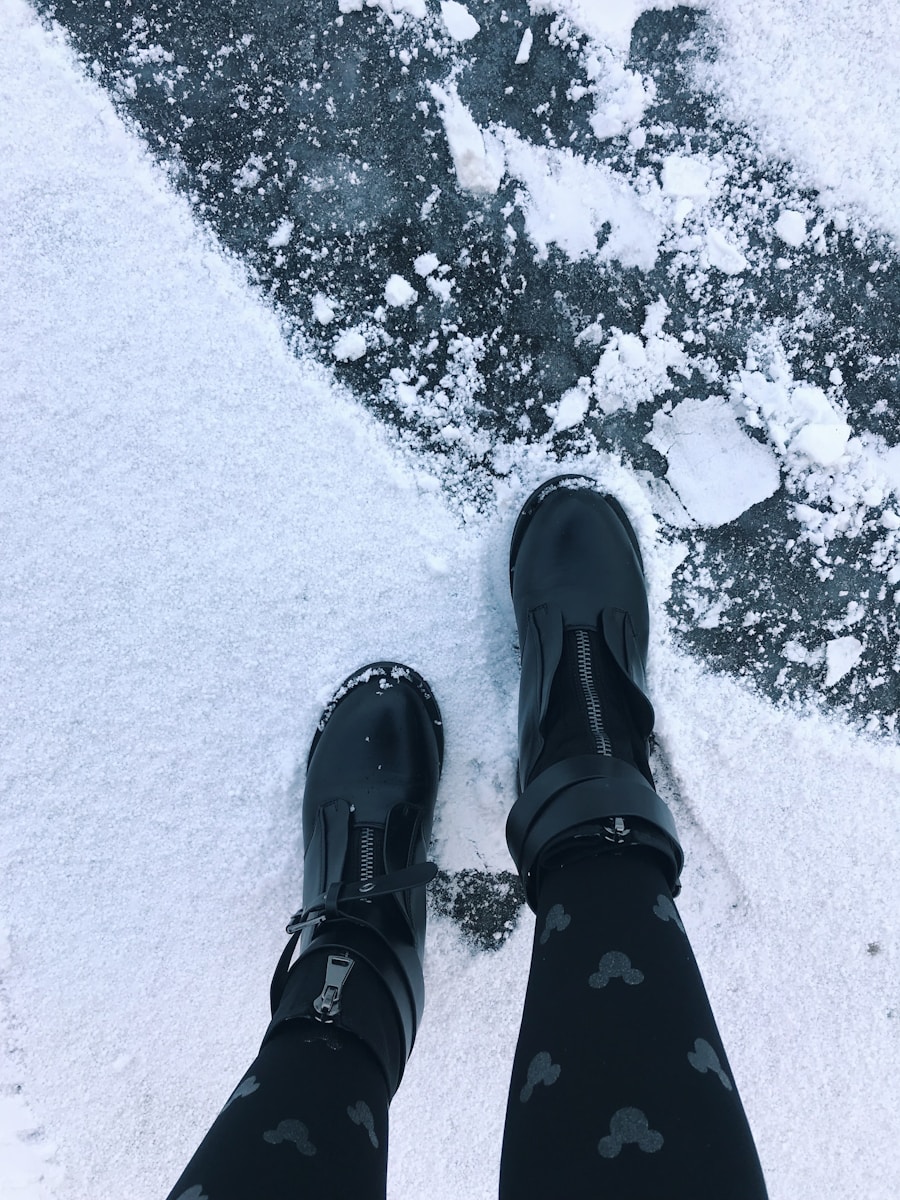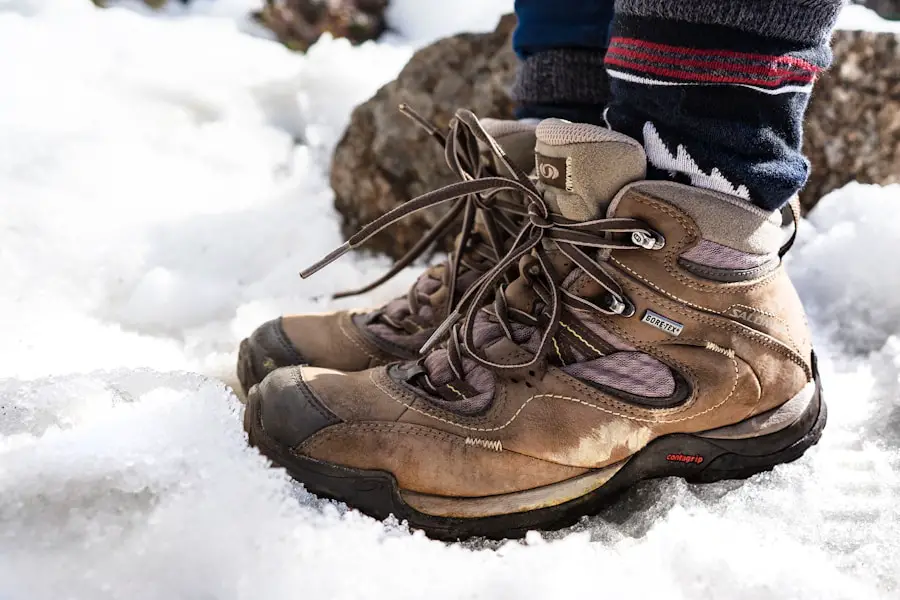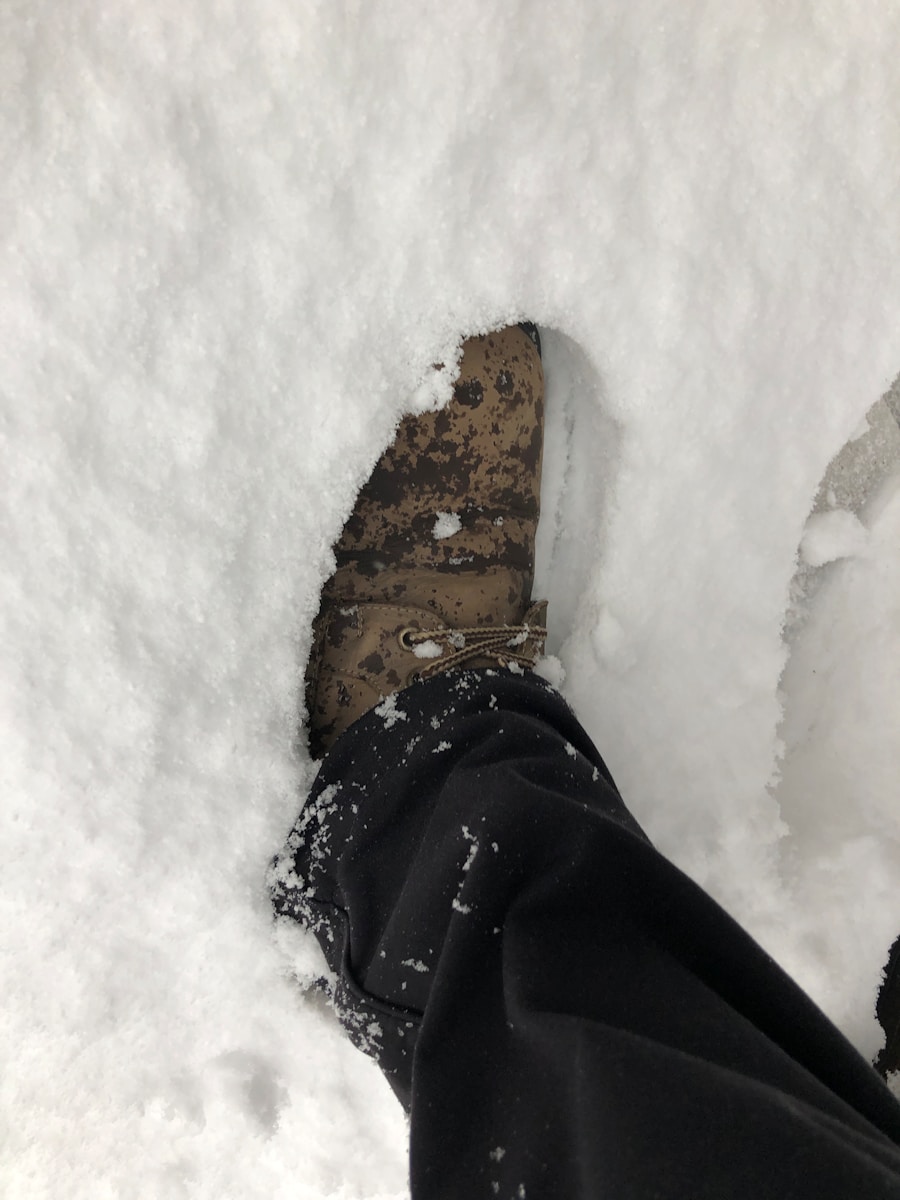Hiking boots and snow boots are essential footwear for outdoor enthusiasts, each designed with specific features to cater to different environments and activities. Hiking boots are primarily crafted for rugged terrains, providing support, traction, and durability for long treks through forests, mountains, and rocky paths. They typically feature a sturdy construction with materials that offer breathability and moisture-wicking properties, ensuring comfort during extended wear.
The design often includes a high ankle for added support and protection against debris, while the soles are engineered to grip various surfaces effectively. On the other hand, snow boots are tailored for cold, snowy conditions, prioritizing insulation and waterproofing to keep feet warm and dry. These boots often have a thicker sole with a tread pattern designed to prevent slipping on ice and packed snow.
Insulation materials such as Thinsulate or fleece are commonly used to retain heat, while waterproof membranes like Gore-Tex ensure that moisture from snow does not seep in. Understanding the distinct purposes of these two types of footwear is crucial for anyone planning outdoor activities in winter conditions, as the right choice can significantly impact comfort and safety.
Key Takeaways
- Hiking boots are designed for hiking on various terrains, while snow boots are specifically designed for walking in snowy and icy conditions.
- The key differences between hiking boots and snow boots lie in their insulation, waterproofing, and traction features.
- When using hiking boots in snowy conditions, it is important to consider factors such as insulation, waterproofing, and traction to ensure safety and comfort.
- Hiking boots offer advantages in snowy conditions such as versatility, ankle support, and breathability.
- Limitations of using hiking boots in snowy conditions include less insulation and traction compared to snow boots.
Key Differences Between Hiking Boots and Snow Boots
The primary differences between hiking boots and snow boots lie in their construction, insulation, and intended use. Hiking boots are generally lighter and more flexible, allowing for greater mobility on uneven terrain. They often feature a breathable upper material that helps regulate temperature and moisture during physical exertion.
The soles of hiking boots are designed for traction on rocky or muddy trails, with a focus on grip rather than insulation. This makes them ideal for warmer weather or milder conditions where snow is not a significant factor. In contrast, snow boots prioritize warmth and waterproofing over flexibility.
They are typically bulkier, with a thicker sole that provides insulation from the cold ground. The upper part of snow boots is often made from materials that can withstand wet conditions, such as rubber or synthetic fabrics treated for water resistance. Additionally, snow boots usually have a higher shaft to prevent snow from entering the boot and may include features like gaiters or drawstrings to secure the fit around the calf.
These differences highlight the importance of selecting the appropriate footwear based on the specific environmental challenges one may encounter.
Factors to Consider when Using Hiking Boots in Snowy Conditions

When considering the use of hiking boots in snowy conditions, several factors must be taken into account to ensure safety and comfort. One of the most critical aspects is insulation. While many hiking boots provide some level of thermal protection, they may not offer sufficient warmth for prolonged exposure to cold temperatures.
It is essential to assess the expected weather conditions and the duration of time spent outdoors to determine if additional insulation is necessary. Another important factor is traction. Snow-covered surfaces can be treacherous, and hiking boots may not provide the same level of grip as dedicated snow boots.
The tread pattern on hiking boots is designed for varied terrain but may struggle on icy or slippery surfaces. In such cases, it may be beneficial to consider adding traction devices like crampons or microspikes to enhance grip. Additionally, the waterproofing capabilities of hiking boots should be evaluated; if they lack adequate protection against moisture, feet may become wet and cold, leading to discomfort or even frostbite.
Advantages of Using Hiking Boots in Snowy Conditions
| Advantages | Description |
|---|---|
| Insulation | Hiking boots provide insulation to keep your feet warm in snowy conditions. |
| Waterproofing | Many hiking boots are designed to be waterproof, keeping your feet dry in the snow. |
| Grip | Hiking boots have rugged soles that provide better traction on slippery and icy surfaces. |
| Ankle Support | Hiking boots provide ankle support, reducing the risk of twisting or spraining your ankle in uneven and snowy terrain. |
| Durability | Hiking boots are built to withstand harsh conditions, making them more durable in snowy environments. |
Despite their limitations, there are several advantages to using hiking boots in snowy conditions, particularly for those who engage in winter hiking or snowshoeing. One significant benefit is their lightweight design compared to traditional snow boots. This can lead to less fatigue during long hikes, allowing for greater endurance and enjoyment of the winter landscape.
The flexibility of hiking boots can also provide a more natural range of motion, which is particularly advantageous when navigating uneven terrain or deep snow. Moreover, many hiking boots are designed with excellent breathability, which can help regulate foot temperature during physical activity. This feature is crucial in preventing overheating and moisture buildup inside the boot, which can lead to cold feet once activity levels decrease.
Additionally, hikers who are accustomed to their hiking boots may find them more comfortable than unfamiliar snow boots, reducing the risk of blisters or discomfort during extended wear. For those who frequently transition between different types of terrain, hiking boots can offer versatility that snow boots may lack.
Limitations of Using Hiking Boots in Snowy Conditions
While there are advantages to using hiking boots in snowy conditions, several limitations must be acknowledged. One of the most significant drawbacks is their lack of adequate insulation compared to snow boots. In extremely cold temperatures or prolonged exposure to snow, hikers may find that their feet become uncomfortably cold, which can lead to numbness or frostbite if not addressed promptly.
This limitation makes it essential for users to carefully monitor their foot temperature and take breaks as needed. Another limitation is the potential for inadequate waterproofing. Many hiking boots are designed with breathable materials that may not provide sufficient protection against wet snow or slush.
If moisture seeps into the boot, it can create an uncomfortable environment that leads to cold feet and increased risk of blisters. Additionally, the tread patterns on hiking boots may not perform well on icy surfaces, increasing the likelihood of slips and falls. Hikers should be aware of these risks and consider their specific needs when deciding whether to use hiking boots in snowy conditions.
Tips for Modifying Hiking Boots for Snowy Conditions

For those who choose to use hiking boots in snowy conditions, several modifications can enhance their performance and comfort. One effective strategy is to invest in high-quality thermal socks made from materials like merino wool or synthetic blends that provide insulation while wicking moisture away from the skin. Layering socks can also help improve warmth; however, it’s essential to ensure that the fit remains comfortable without causing constriction.
Adding traction devices is another practical modification that can significantly improve safety on icy surfaces. Products like Yaktrax or Kahtoola microspikes can be easily attached to the soles of hiking boots, providing additional grip without compromising mobility. Furthermore, applying a waterproofing spray or treatment can enhance the water resistance of hiking boots, helping to keep feet dry in wet conditions.
Regular maintenance checks for wear and tear on the soles and uppers can also ensure that the boots remain functional during winter excursions.
Alternative Options for Snow Boots
For those who find that hiking boots do not meet their needs in snowy conditions, several alternative options exist that cater specifically to winter activities. Insulated snow boots are designed with thick insulation materials that provide superior warmth while maintaining waterproof capabilities. Brands like Sorel and Columbia offer models that combine style with functionality, ensuring that wearers remain comfortable even in harsh winter climates.
Another alternative is winter-specific hiking boots that blend features from both categories. These hybrid models often include insulation and waterproofing while retaining some flexibility and lightweight characteristics typical of traditional hiking boots. They are ideal for individuals who enjoy winter hiking but require additional warmth and protection against snow and ice.
Additionally, specialized footwear such as mountaineering boots may be suitable for extreme conditions where both insulation and technical performance are paramount.
Making the Best Choice for Your Winter Adventures
Selecting the right footwear for winter adventures requires careful consideration of various factors including insulation, waterproofing, traction, and intended use. While hiking boots can serve adequately in certain snowy conditions with appropriate modifications, dedicated snow boots offer advantages that cannot be overlooked when facing extreme cold or deep snow. Understanding personal needs and preferences will ultimately guide outdoor enthusiasts in making informed decisions about their footwear choices for winter activities.
Whether opting for hiking boots with enhancements or investing in specialized snow footwear, ensuring comfort and safety should always remain a top priority during outdoor excursions in winter landscapes.
If you are considering using hiking boots as snow boots, you may want to read this article on the best time to visit St. Lucia. Understanding the climate and terrain of your destination is crucial when choosing the right footwear for your trip. Just like planning for a vacation, it is important to be prepared for any weather conditions you may encounter while hiking or exploring in the snow.
FAQs
Can hiking boots be used as snow boots?
Yes, hiking boots can be used as snow boots in certain conditions. However, they may not provide the same level of warmth and waterproofing as traditional snow boots.
What are the differences between hiking boots and snow boots?
Hiking boots are designed for hiking on rugged terrain and provide support and stability, while snow boots are specifically designed to keep feet warm and dry in snowy and wet conditions.
What should I consider when using hiking boots as snow boots?
When using hiking boots as snow boots, consider the temperature and moisture levels of the snow. If the snow is wet or the temperatures are extremely cold, hiking boots may not provide adequate protection.
Can I add traction to my hiking boots for use in snowy conditions?
Yes, there are traction devices such as crampons or traction cleats that can be added to hiking boots to improve grip and stability in snowy and icy conditions.
Are there specific hiking boots that are better suited for use in snow?
Some hiking boots are designed with insulation and waterproofing specifically for use in snowy conditions. Look for hiking boots with features such as Thinsulate insulation and Gore-Tex waterproofing for better performance in the snow.
